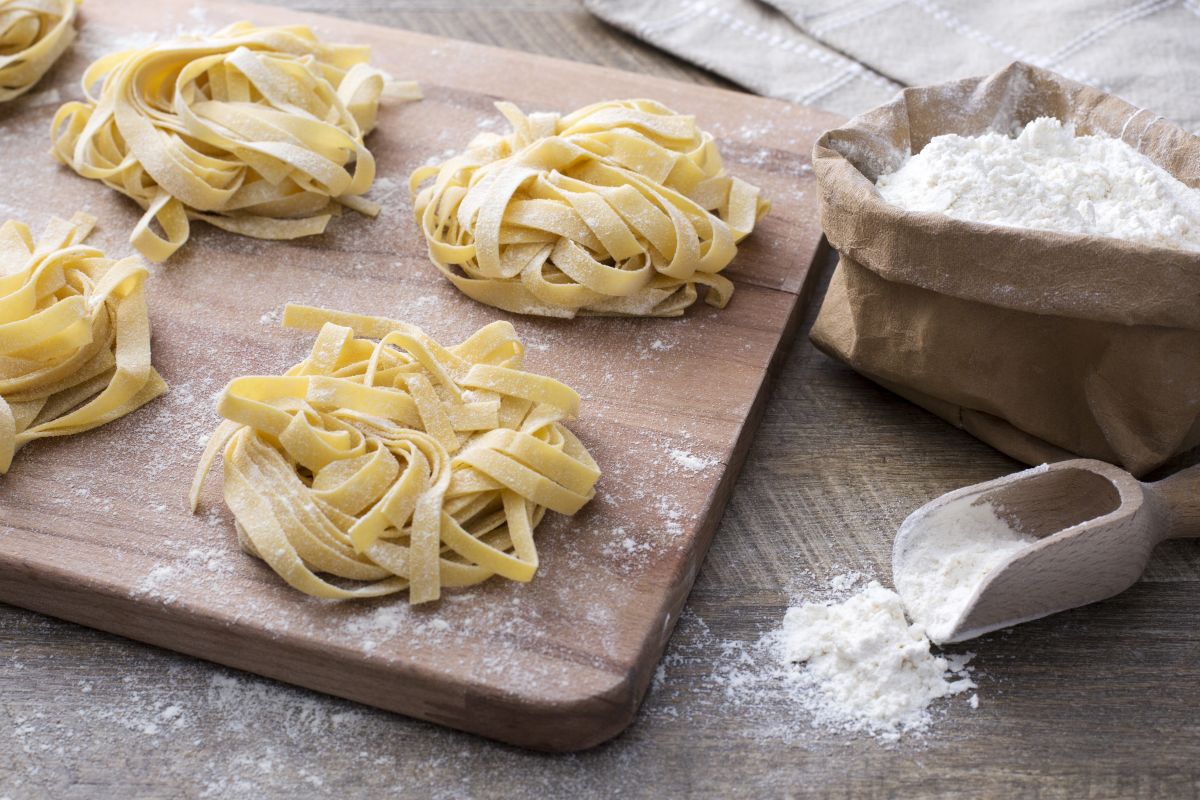Tortellini
- Average
- 1 h 50 min

Along with orecchiette, trofie and fusilli, tagliatelle are one of the most delicious and well-known pasta shapes of Italian cuisine. According to tradition, this delicacy is typical of the city of Bologna, where tagliatelle are usually prepared with the unmissable ragu bolognese. Despite being a typical recipe of Emilia, tagliatelle are widespread in other regions too, including in the Marche and Veneto, and they are also perfect for serving with other condiments: mushrooms, truffle or a simple fresh tomato sauce for example! There are also more rustic versions, like the egg-free one, prepared with nothing but water and semolina. Tagliatelle are a veritable institution: on 16th April 1972, the Confraternita del Tortellino and the Accademia Italiana della Cucina jointly registered the authentic recipe and size of the original "Tagliatella di Bologna" to the Bologna Chamber of Commerce. Tagliatelle were assigned a special size: 8 mm (0.31 inches) wide when cooked, and around 7 mm (0.28 inches) uncooked (12,1270th of the Asinelli Tower, the symbolic monument of Bologna). There is no definitive ruling as to the thickness of this kind of fresh pasta, although experts have ruled that it should be between 6 and 8 tenths of a millimeter. We faithfully prepared traditional tagliatelle according to these instructions, while leaving the choice of condiment entirely up to you!
Try the recipes of our tagliatelle seasoned in different ways:

To prepare tagliatelle, start by placing the flour in a bowl (use slightly less than the full dose so that you can add more if needed) 1. Create a well in the center of the flour, break open the eggs at room temperature and place them in the middle. Now beat with a fork 2 and as soon as the eggs absorb a little flour, knead by hand 3

to obtain a homogeneous dough. Continue kneading the dough on a worktop lightly sprinkled with flour 4 for at least 10-15 minutes to achieve a smooth and elastic consistency 5. Knead energetically to develop the gluten, but without tearing the dough. Now roll into a ball and envelop in plastic wrap 6. Leave the dough to rest at room temperature for at least 30 minutes.

Split it into three parts 7 so that it is easier to roll out. Sprinkle abundant flour over one piece and flatten it 8; do not remove the other two pieces from the plastic wrap, otherwise they will dry out. Take the pasta making machine and set it to thickness level 1, the thickest setting, and feed the dough through the rollers 9

to obtain a thick pasta sheet 10, then fold both edges of the past to the middle, for a more rectangular shape (11-12)

and lightly sprinkle with flour before feeding it through the rollers once more; repeat several times all the way up to thickness setting 8 13. Place the resulting sheet of pasta on a pastry board sprinkled with flour, tip the edges using a spatula (or knife) for a more regular-shaped past (14-15)

and split into two pieces 16 so that it is easier to work with. Feed it back into the pasta machine set to 8 17, as it will have shrunk a little after kneading. Now sprinkle a little semolina on both sides 18, leave the pasta sheets to dry for 5 minutes on each side.

Take a pasta sheet, fold one edge over by around two thirds 19 and start shaping it 20 into a very flat roll, with the closed end up 21.

Cut the pasta roll into 0.28 inch (7 mm) thick slices 22. Pick up the tagliatelle by both ends 23 and spread them out on your hand 24;

now roll them around your fingers to create a nest and place on a pastry board lightly sprinkled in flour (25-26). Continue until you finish all the dough. Your tagliatelle are ready, all you need to do now is cook them 27.